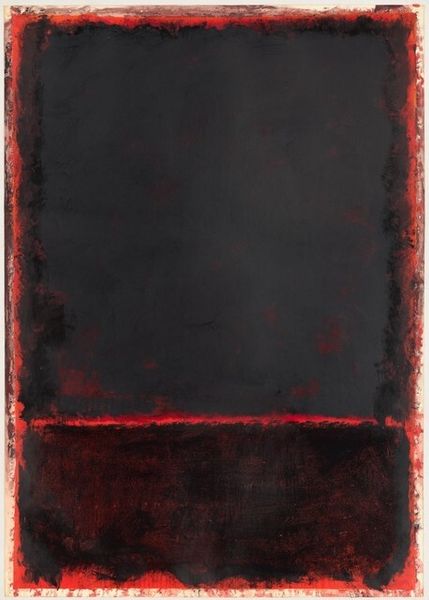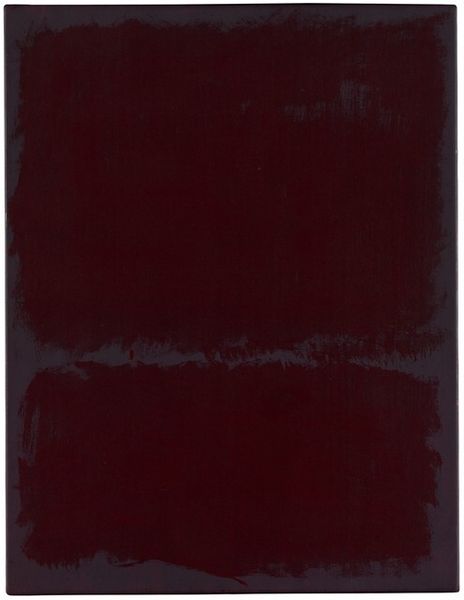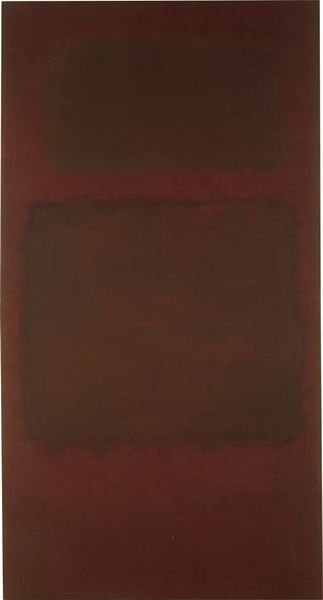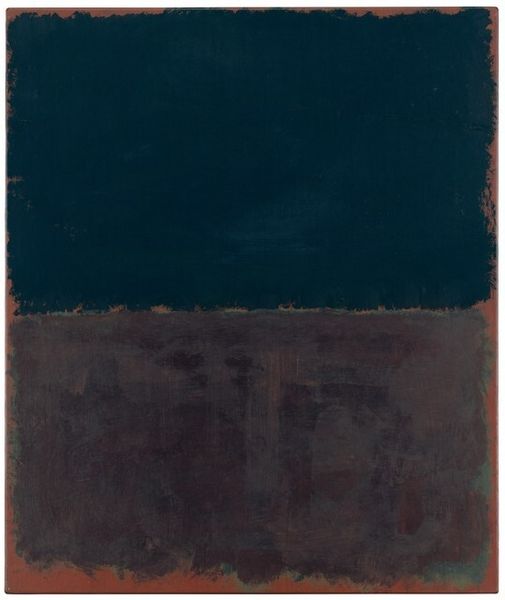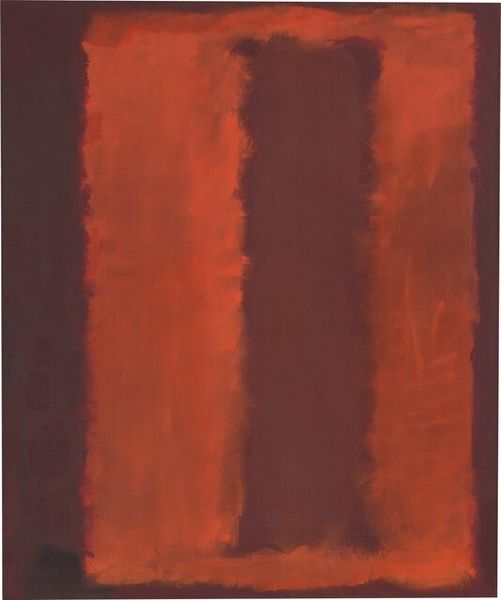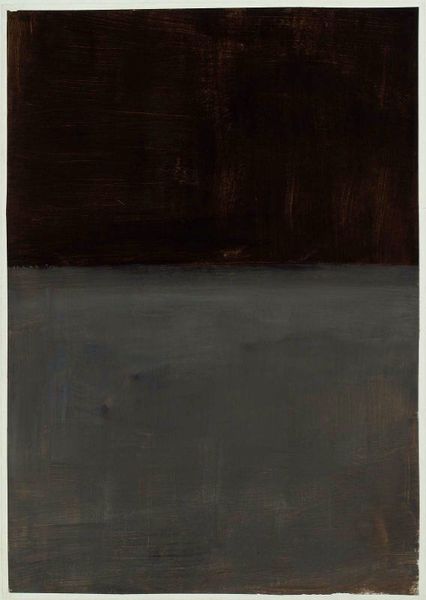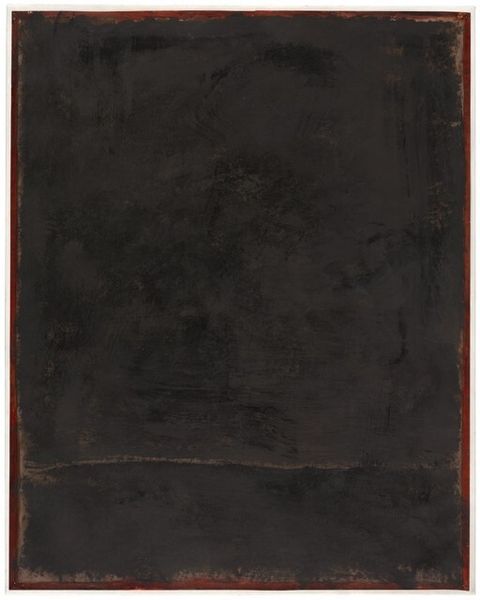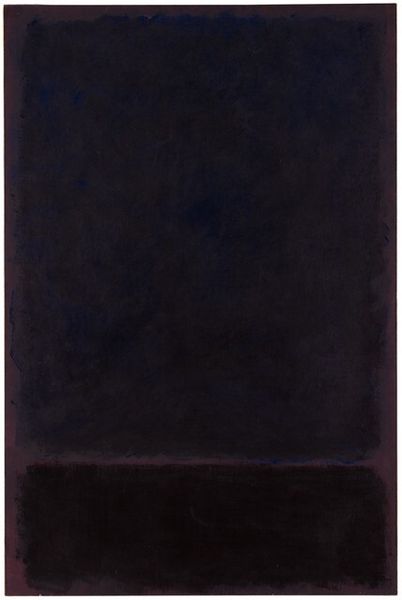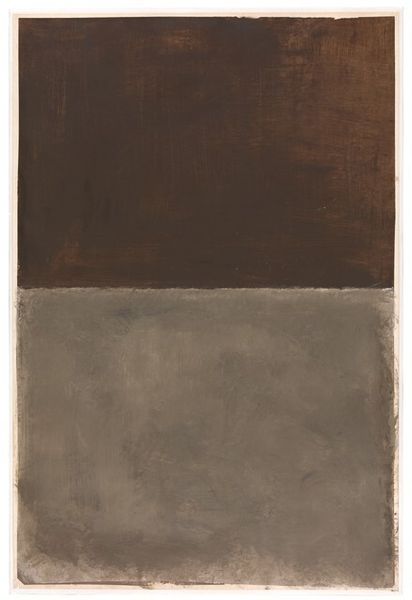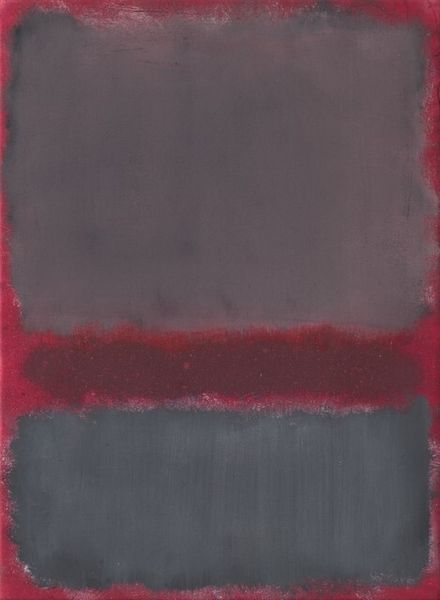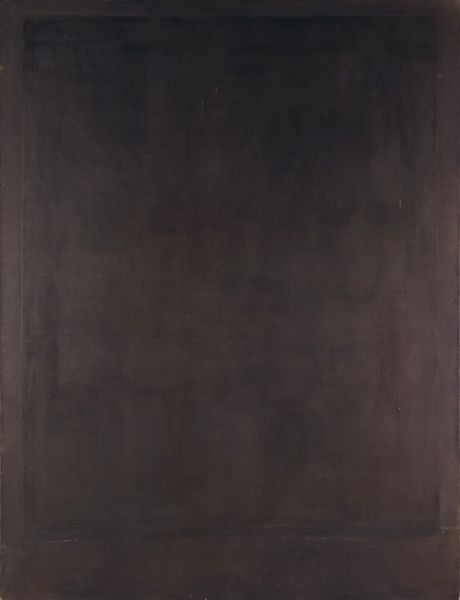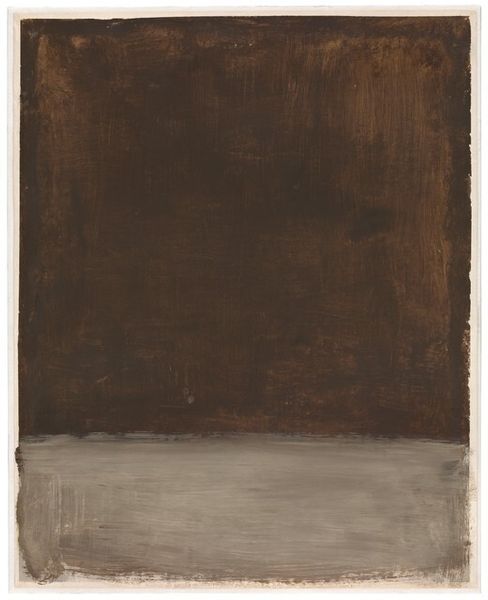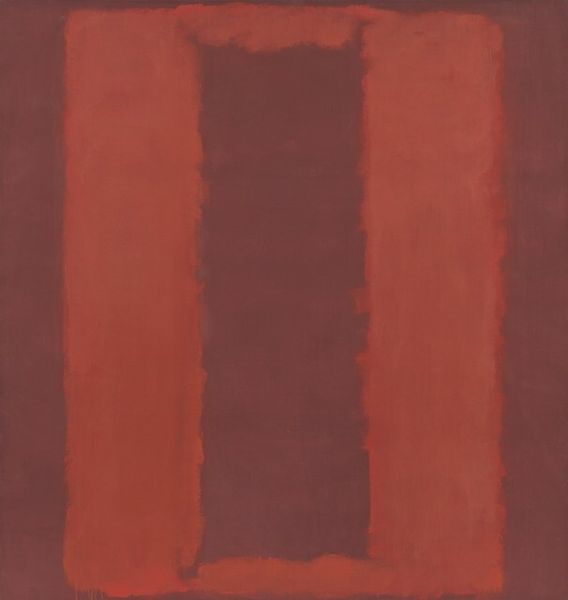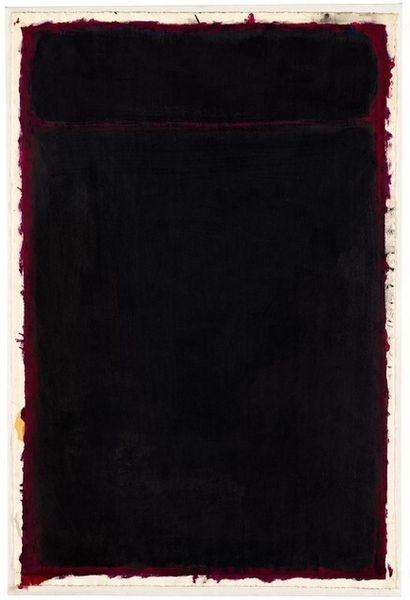
painting, oil-paint
#
abstract-expressionism
#
abstract expressionism
#
painting
#
oil-paint
#
colour-field-painting
#
abstraction
#
modernism
#
monochrome
Dimensions: overall: 83.3 x 63.8 cm (32 13/16 x 25 1/8 in.)
Copyright: National Gallery of Art: CC0 1.0
Art Historian: Okay, let's dive in. Editor: We're looking at an untitled painting by Mark Rothko, created in 1968, using oil on canvas. The deep reds and browns give me a really somber feeling, but also the texture makes it quite rich to view. What do you see in this piece? Art Historian: Well, first thing I notice is the process. Rothko’s method here involves layering thin washes of oil paint. Look at how the color saturates the canvas; think about the time involved in applying these successive veils. Consider too the materiality of those pigments. Where were they sourced? How were they ground and mixed? What does that process tell us about the artist's labor, and, ultimately, about the value we ascribe to this kind of labor? Editor: So it’s about the work that goes into creating the work itself. That makes sense given Rothko’s career! Is that related to the kind of art it is? Art Historian: Absolutely. Abstract Expressionism as a movement, especially Color Field Painting which is a subgenre, emerged in a very specific socio-economic context. Post-war America. It moved away from the earlier form of figurative imagery or direct representation. Artists instead explored materiality and color on a grand scale. Do you see how Rothko's work reflects this move away from established artistic conventions and towards raw materials and abstraction? Editor: It's interesting how a simple choice like monochrome leads to a complete shift. I hadn’t thought about it that way before. It’s like the material, or lack of other elements, creates the art itself. Art Historian: Precisely. We might even consider the art market, the institutions displaying these works. These become material components influencing our understanding of this "Untitled" piece. Thinking about what this piece communicates beyond simple beauty. The process behind art gives context. Editor: Yeah, seeing the art as a kind of product. Thank you!
Comments
No comments
Be the first to comment and join the conversation on the ultimate creative platform.
